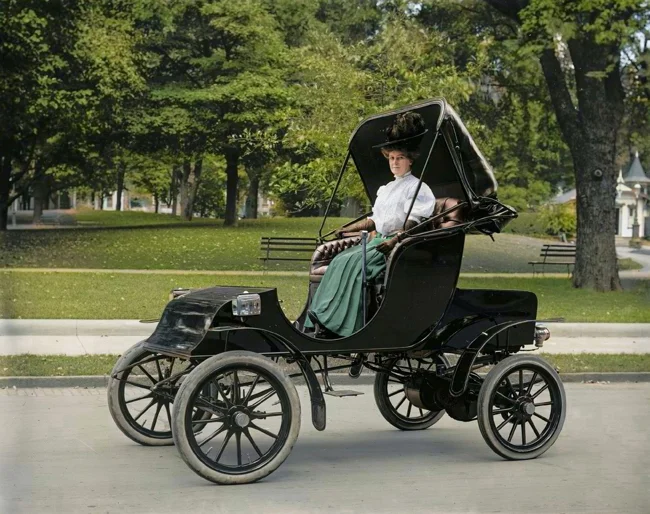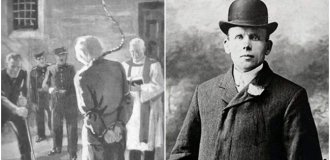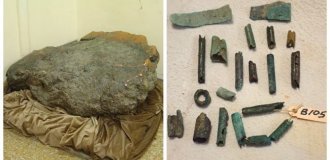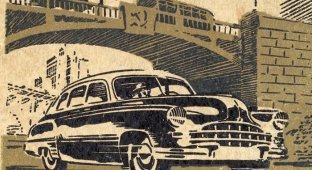Interesting and sometimes funny pictures on the automotive theme (21 photos)
The 20th century was an era of discovery: from the first Model T Fords to the luxury convertibles of the 1950s, from racing cars to utopian concepts of the future. Each photo is like a flash of auxiliary light on the road of time, showing how cars transformed from curiosities to everyday life, and then to iconic artifacts of the era. 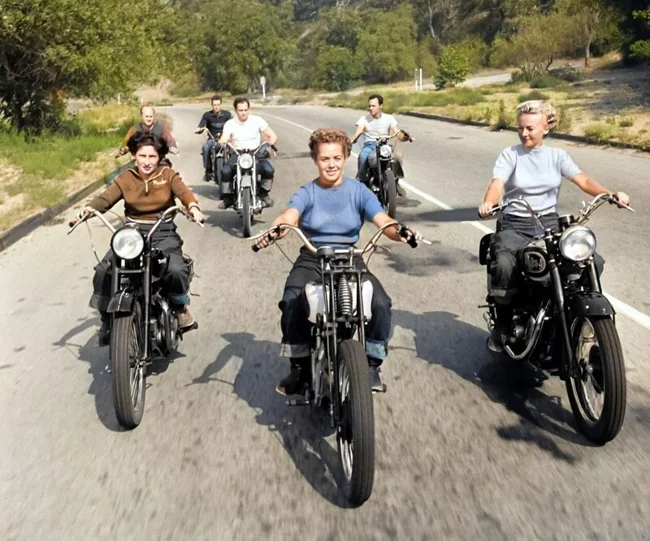
A 1939 Cadillac on rails from the Nevada Northern Railway.
An exclusive car, designed specifically for railway inspections, has become a mobile office for officials and engineers.
Today, this unusual car occupies a place of honor in the collection of the Nevada Railroad Museum (USA), attracting the attention of connoisseurs of transport history and fans of retro cars. 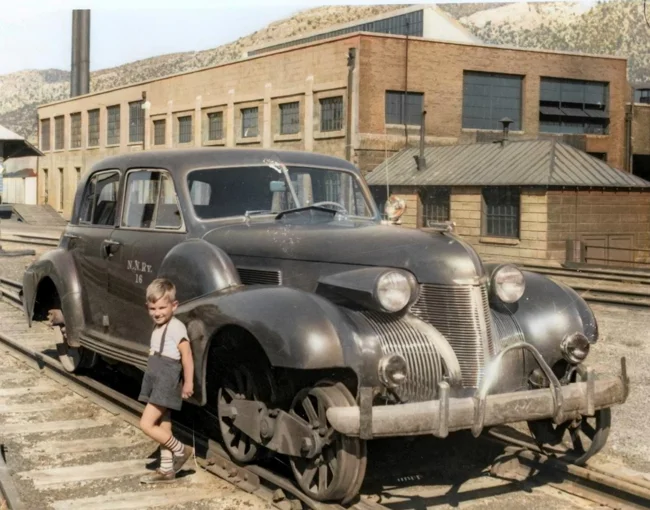
In the garage of the "Automobiles" store on Bakuninskaya Street in Moscow, 1949.
Almost 80 years ago, on June 28, 1946, the first examples of the legendary "Pobeda" rolled off the assembly line of the Gorky Automobile Plant (GAZ) - a car that became a symbol of hope for peace after the devastation of the Great Patriotic War. It was created in seemingly impossible conditions: during the war, under the alarming roar of bombing, when half the plant lay in ruins, and the engine and wheel shops were destroyed. But it was during these years that GAZ engineers worked on the drawings of the future sedan, believing that one day the country would again talk about comfortable roads, and not about tank attacks.
Back in 1944, when the war was not retreating, the plant's chief designer Andrei Lipgart personally drove the first GAZ M-20 from the workshop on a long test run to Moscow. This trip was not only a quality check, but also a demonstration of fortitude: the car, conceived in the hell of war, already promised to become the embodiment of a victorious bright future.
If the front demanded armored cars and SUVs, then the civilian population dreamed of a reliable, affordable car. "Pobeda" was the answer to this dream - a spacious interior, stability on the roads, stylish design. It did not just transport people: it transported faith in the best, becoming a cult car of the post-war era. 
Wartburg 311-3 Coupe, 1957.
The Wartburg 311 is a car produced by the East German automaker VEB Automobilwerk Eisenach from 1956 to 1965. The 311 was available in several variants, including a pickup truck, a sedan, a limousine, a coupe, and a two-seater roadster. 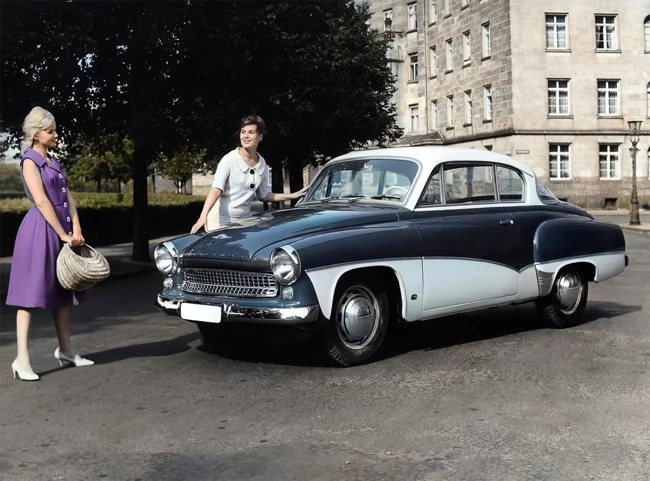
Rally XXVIII Rajd Polski. People's Republic of Poland. July-August 1968.
The legendary ZAZ-966 and Moskvich-408 models represented the Soviet Union in the international rally of the 1960s. Four crews started the race in Moskvichs and two in Zaporozhets:
Moskvich-408:
No. 50 — A. Heinö and G. Holm
No. 54 — K. Mikfeld and L. Kirge
No. 57 — V. Bubnov and Yu. Shnikers
No. 60 — E. Andreev and E. Singurudi
ZAZ-966:
No. 20 — I. Kochkin and F. Gorislavsky
No. 24 — K. Girdauskas and S. Malinauskas
Not all of the 69 participants made it to the finish line. The Soviet crews showed resilience, but success was limited to a few:
Moskvich-408 #50 (Heinö/Holm) took 5th place
Moskvich-408 #60 (Andreev/Singurudi) — 6th
ZAZ-966 #20 (Kochkin/Gorislavsky) was 15th, the only remaining Soviet representative in the race.
The remaining Soviet cars dropped out of the race due to technical problems or disqualification, which underscored the difficulty of the rally.
The winners were:
The Poles in Renault 8 Gordini (first place),
The Czechoslovakians in Renault 8 Gordini (second place),
The Czechoslovakians in Skoda 1100 MB (third place). 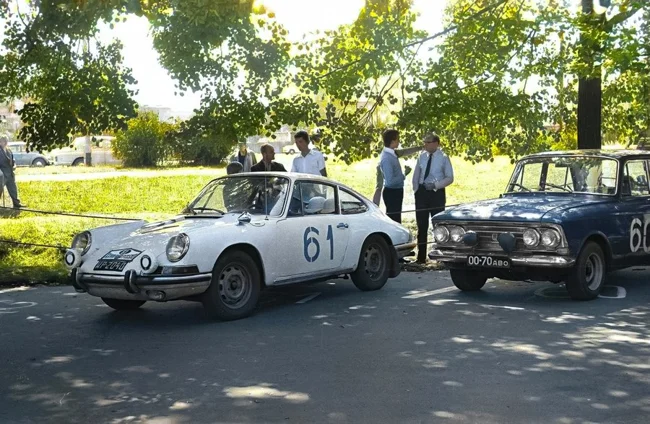
Chevrolet Turbo Titan III with a gas turbine engine. The series was not released due to new restrictions on harmful emissions, 1960.
The Chevrolet Turbo Titan III was an experimental gas turbine truck developed by General Motors in 1960. Despite its innovative approach and high power, the project never reached mass production due to stricter emission standards introduced by US regulators. These standards became a serious obstacle for technologies that did not meet environmental safety requirements and forced automakers to reconsider their development strategy.
In the 1960s, gas turbine engines were considered a promising alternative to classic internal combustion engines. They promised fewer parts, high reliability, and the ability to use various types of fuel. However, high exhaust temperatures and difficulties in neutralizing harmful emissions made them incompatible with new regulations introduced by states, including California, where the first environmental standards began to form. 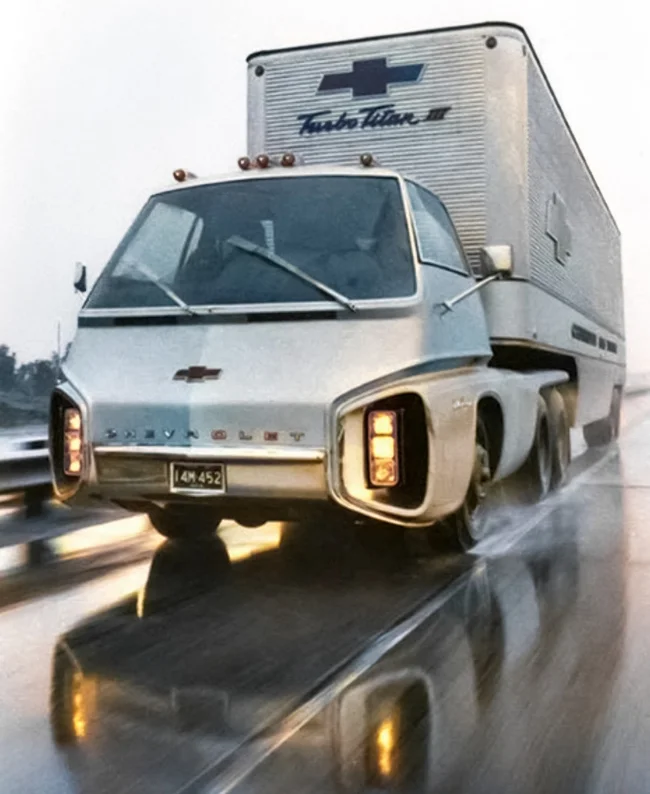
A group of designers and engineers from the Minsk Automobile Plant (MAZ) with the first model of the MAZ-500A truck (produced serially since 1970). Minsk, 1969.
MAZ-500A is one of the first modifications of the iconic Soviet truck MAZ-500, produced since 1959 at the Minsk Automobile Plant. This model became a key stage in the development of the domestic auto industry, replacing the outdated ZIL-150 and setting a new standard for reliability, load capacity and adaptability to difficult conditions. 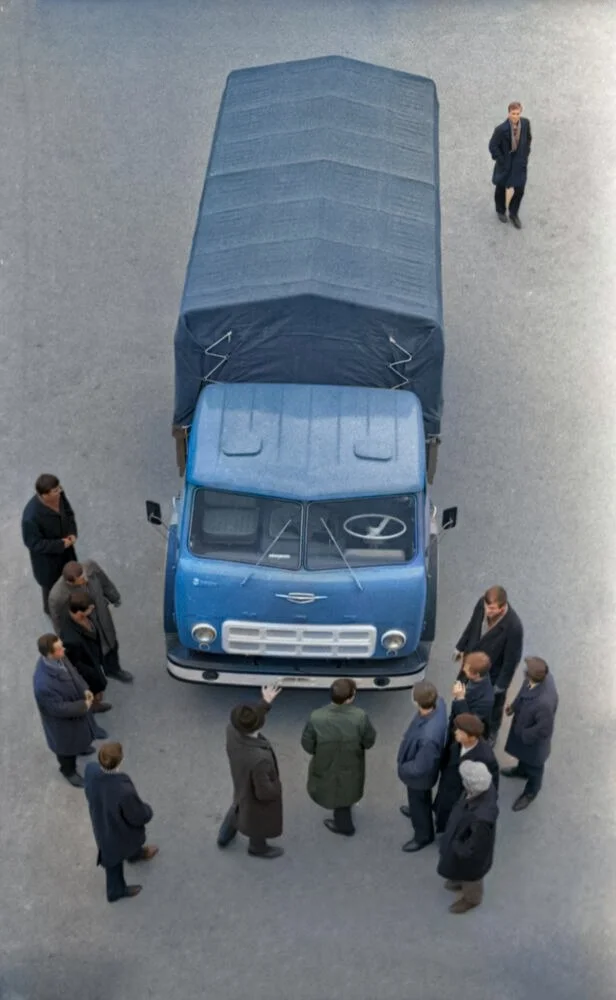
Motorcyclists, 1949.
As always, I could not ignore the two-wheeled "iron horses" and added them to the selection. 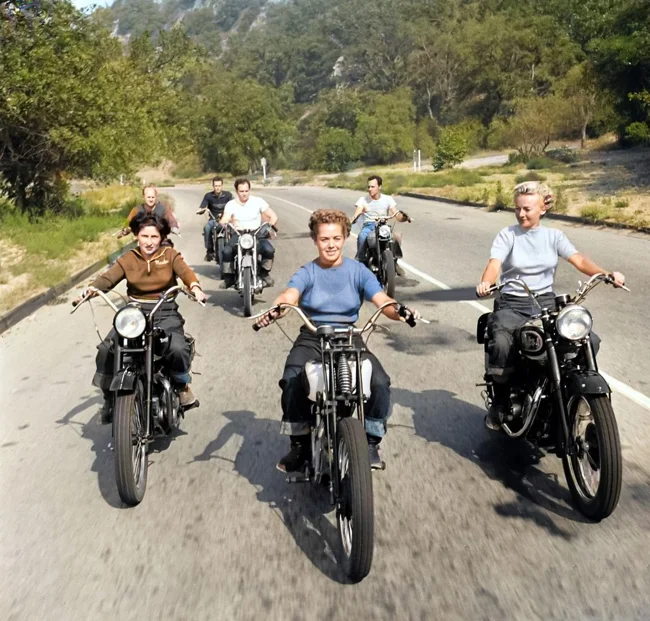
.
USSR Car Racing Championship. ZIL-112 Cyclops cars, 1956.
The ZIL-112 Cyclops cars in the photo are in the background. In the foreground we see a car - "Samodelka", created by Alexander Shaterkin and S. Bauer. Its appearance, reminiscent of the legendary "Cyclops", hid under the hood the sporting potential that it proved on the track, representing Moscow from the 7th taxi company.
As part of the 1956 championship, five homemade sports cars participated in the races, but only two of them managed to reach the finish line. The "homemade" car became one of the few whose reliability and endurance withstood the test of distance, leaving behind not only rivals, but also a lot of broken competitors.
This car is a striking example of how engineering imagination and love of speed could be embodied in metal even outside the factory lines. Its participation in the competition became a symbol of the era when every garage enthusiast could challenge the professionals. 
Edgar Krueger sits in the driver's seat of a 1917 Chevrolet, while Jenny Krueger Brutzmann and Ernst Brutzmann sit together in the back seat. Wisconsin, 1919. 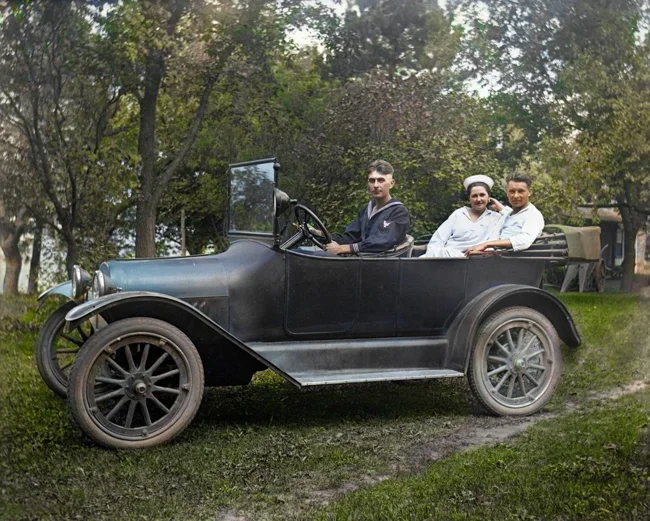
Advertising photos of the German compact car BMW Isetta, produced by BMW since 1955.
In 1955, BMW introduced an unusual car that became a symbol of the era of cheap and practical cars — the Isetta. This microcar, created on the basis of the Italian Iso Rivolta project, was the company's response to the needs of the time: after the war, Europe needed affordable transport, and BMW was looking for a way to survive the crisis.
The length is only 2.29 m, the width is 1.37 m, which made the Isetta ideal for the narrow streets of European cities. 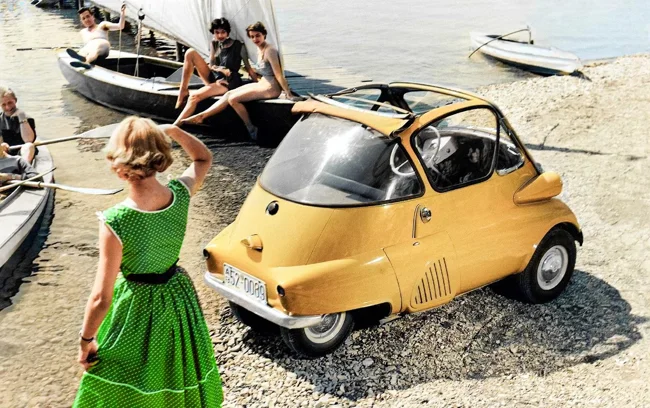
Volkswagen Kafer, 1950s.
From 1946 to 2003, Volkswagen produced the iconic Käfer (German for "Beetle"), a car that became a symbol of affordability and reliability. With it, Ferdinand Porsche brought the idea of a "people's car" to life, keeping the basic design unchanged throughout the entire history of production. Over 57 years, 21.5 million units rolled off the assembly line. 
Assembly shop for Pobeda and ZIM passenger cars at the Gorky Automobile Plant (GAZ) named after V.M. Molotov, 1954. 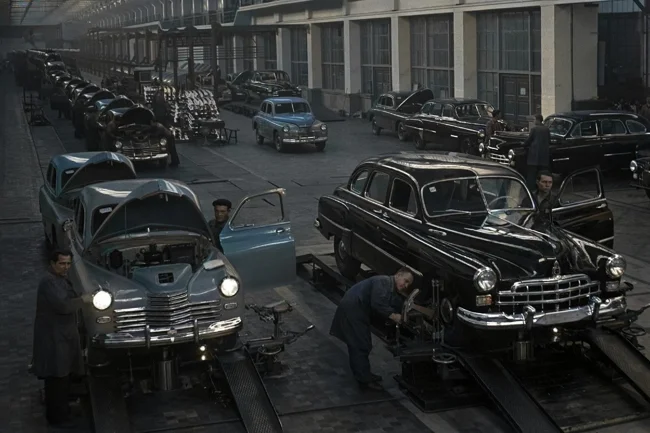
Trabant cars. GDR, 1970s
The Trabant is a cult car, created in 1957 at the East German VEB Sachsenring plant in Zwickau. This car, famous for its simplicity, long wait and unusual design, became an integral part of life in the GDR. Its production continued until 1991, when the fall of the Berlin Wall put an end to the Trabant era.
The Trabant became a metaphor for the planned economy - cheap, but in short supply, durable, but morally obsolete. 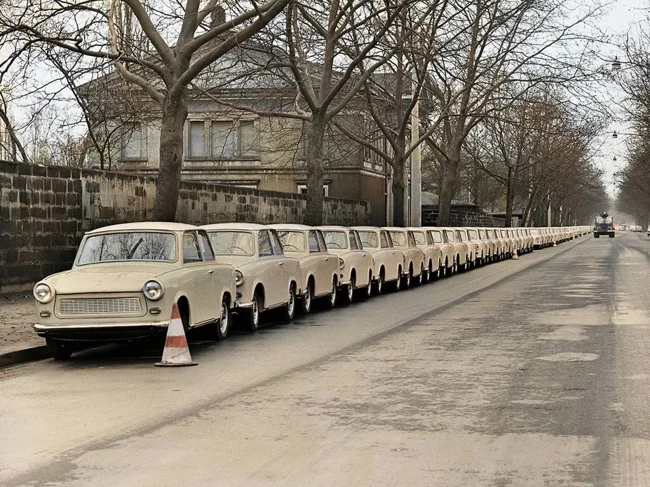
Experimental GAZ-21, 1930s. 
Motorists repairing a car on the side of the highway, 1969. 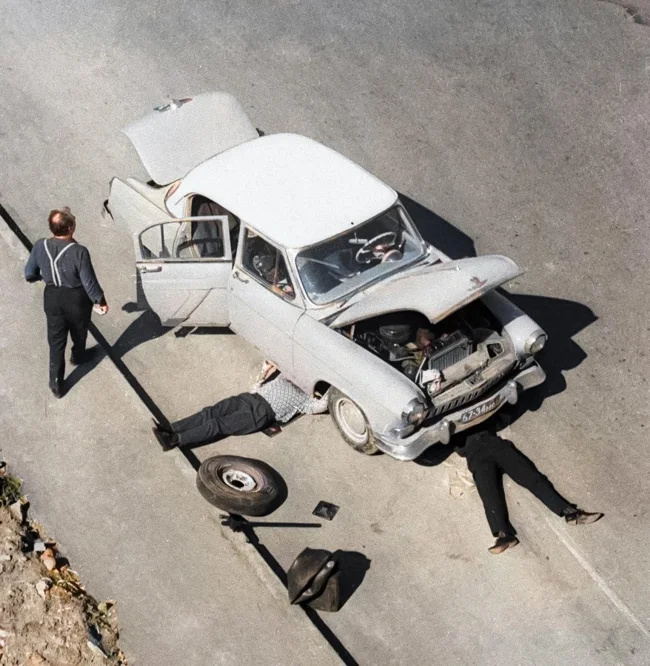
Raymond Mays loses a wheel on a bend in the Caerphilly Mountain Hill car race near Cardiff, Wales, 1924.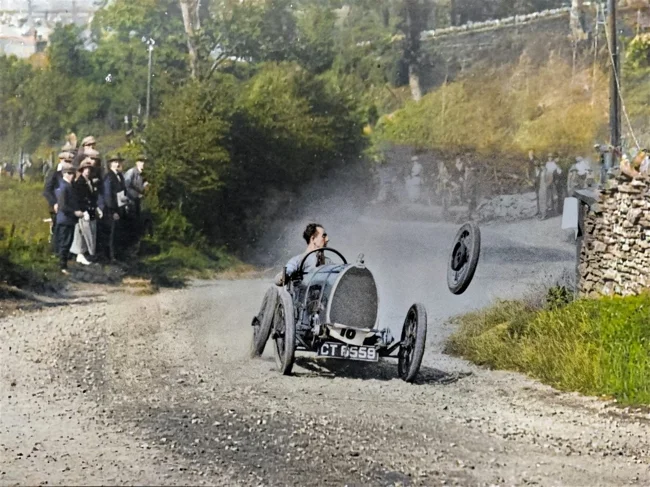
1936 Fiat Topolino, for the Dutch railways. Netherlands, 1947.
In 1936, the Italian company Fiat introduced a model that changed the idea of an affordable car: the 500 "Topolino" (Italian for mouse), so named for its miniature size and funny design. This car became the first real "people's car" in Italy, combining engineering ingenuity, aesthetics and practicality. 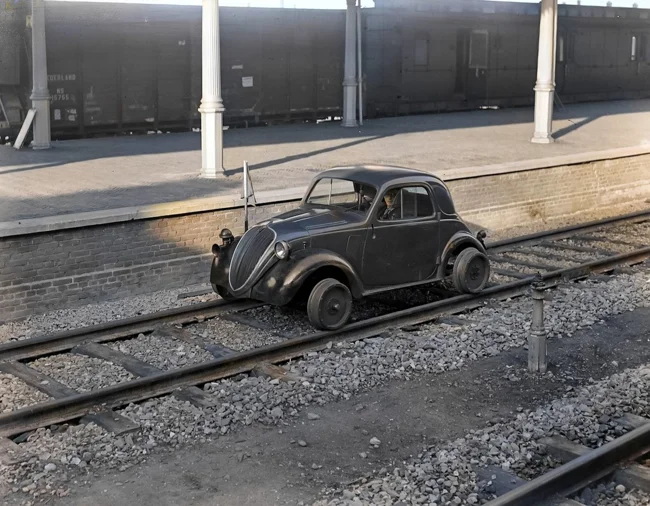
Jaguar XKSS, 1950s. 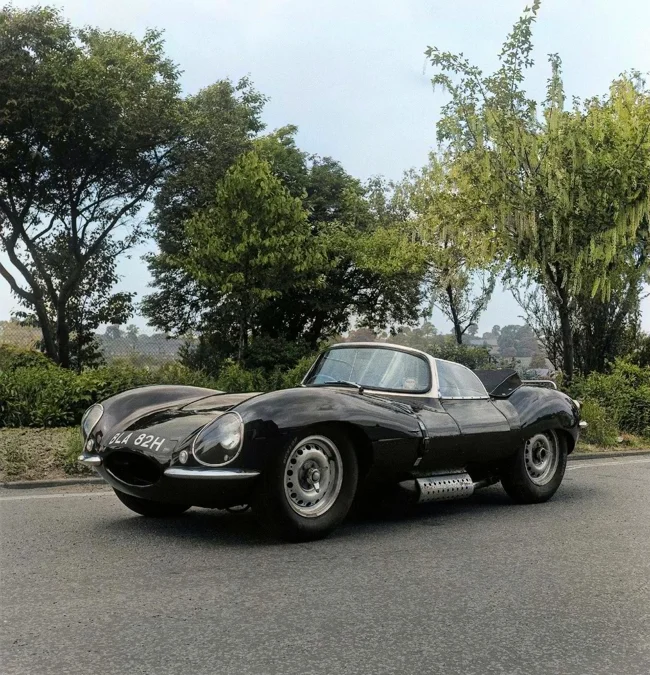
Ford produced its 10 millionth car. USA, 1924. 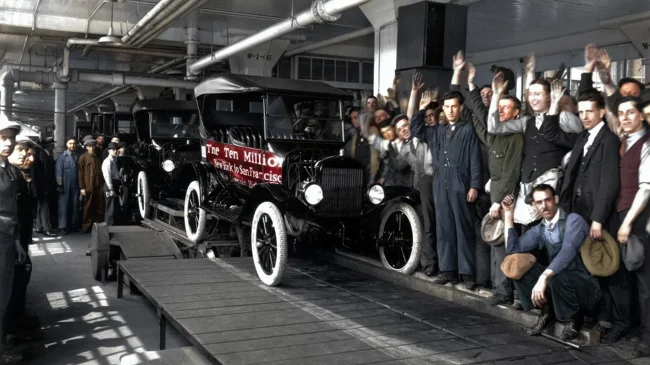
A woman driving a car. Great Britain, 1905. 